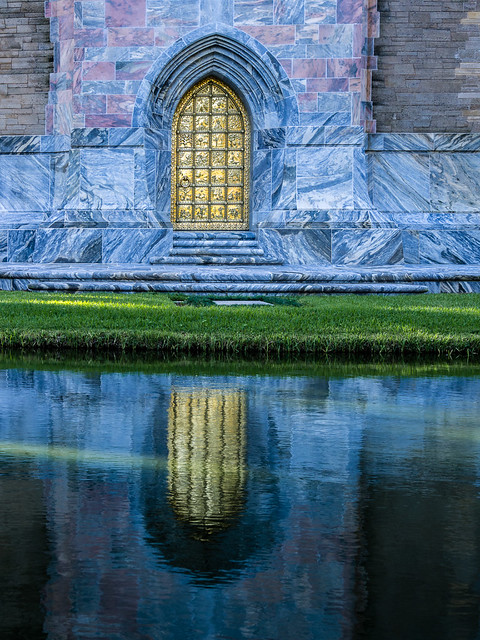Topaz released a new plug-in recently, called ReStyle. You can download any of their products for a free thirty-day trial, so I thought I’d give it a go. This isn’t a full review or tutorial (I haven’t used it long enough for either of those). But I have used it a bit so I’ll try to introduce you to some possibilities with three examples I’ve played with. If you want to see the “before” versions, I’ve included them towards the end of the post.
I had trouble with the white balance in this photo of Marineland beach at dawn. I could have separately adjusted the color balance on the sky and ground using layer masks in Photoshop or gradients in Lightroom. Instead, it was easy to pick out this version from the grid displayed inside ReStyle. It’s interesting how remapping changed the color in the beach and rocks differently from the sky.
Down on the beach at dawn (after Topaz ReStyle).
ReStyle maps color and tone statistics from a selected style to a target image. It seems like Photoshop’s “Image/Adjustments/Match Color” command. When you do this in Photoshop, you have to supply an image with the colors you’re trying to match. ReSyle comes with over 1000 presets and provides control / adjustment of the results that aren’t easily available in Photoshop. There are so many presets that they’re overwhelming, but ReStyle breaks them down into collections (e.g. “Landscape”), and you can mark your favorites. You can show a collection or your favorites as a grid applied to your photo, which makes choosing one very simple. You can also search for similar styles by color or by name. Within each style, you can further adjust the hue, saturation, and luminance of the five colors in each style, as well as the opacity, original image “Texture” strength, and others variables. It also includes mask / selections controls to apply the effects selectively. There’s a lot more info available in the manual at this link.
In this photo of some struggling trees on a small rocky island near Haulover Canal, I wanted a more dramatic color palette. Once again, it was easy to pick out this version from a grid of possibilities.

Survivors (after Topaz ReStyle)
For this infra-red photo of sea oats on the beach that I made in Fred Howard Park near Tampa , I wanted a different look from a typical IR false color image. I like this color mapping I found in ReStyle .

Sea oats – False color infra-red (After Topaz ReStyle)
There are so many presets, options and adjustments that ReStyle can be a little overwhelming. It’s not hard to use, but it is hard to grasp all the possibilities and decide what to do. It’ll take a bit more time for me to get comfortable with it, so I’ll have to play with it some more.
For comparison purposes, here are versions of the photos before I applied Topaz ReStyle:

Before: Down on the beach at dawn.
Before: Survivors

Before: Sea oats – False color infra-red processing.
Summary: Do you have to use plug-ins? Of course not, but they’re useful and save time. And ReStyle seems to offer something I haven’t seen elsewhere. It’ll definitely make your images look different. Are they better? I think ReStyle improved these three images, but only you can decide for your photos. Will this fix all of your problems and should you use it on every photo? Definitely not – I’m new to the tool, but on several photos I tried, I couldn’t get anything that I thought looked good. But it does look like something that’ll be good to have in your bag of tricks.
Off topic public service announcement: I’m always telling you to get out and enjoy nature. I also need to remind you to protect yourself from the sun. I had two skin cancers removed last week. I’m fine – but it’s not the most pleasant thing to go through. And it can be much, much worse than mine were. So when you’re out in the sun enjoying nature, please protect yourself. Use sunscreen, wear a hat and long sleeves, stay in the shade as much as possible, etc. The sun is brutal, especially in Florida. And no one wants to suffer the consequences of too much exposure ten or twenty years down the road.
Thanks for stopping by and reading my blog. Now – go make some photos! And use sunscreen!
©2013, Ed Rosack. All rights reserved































